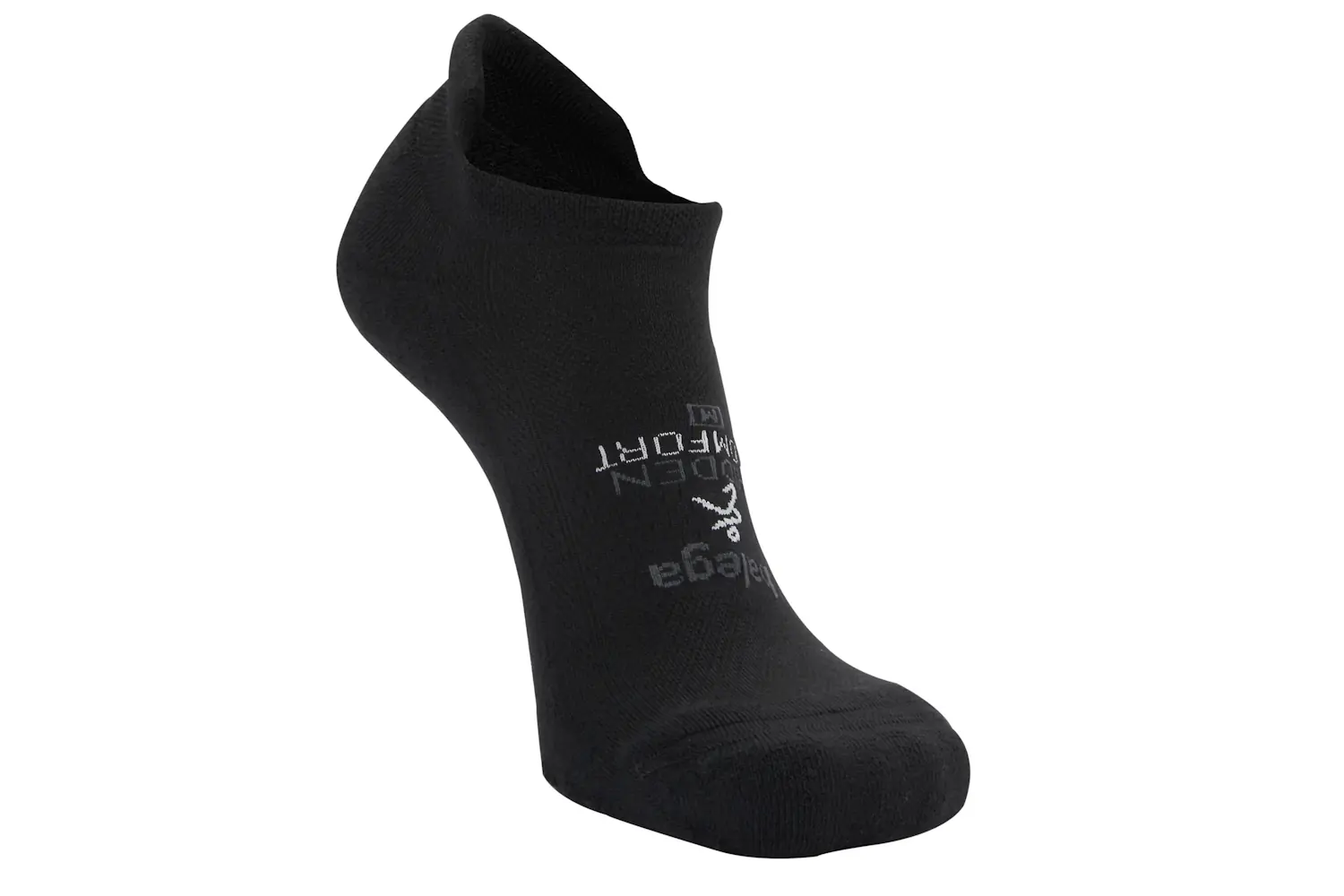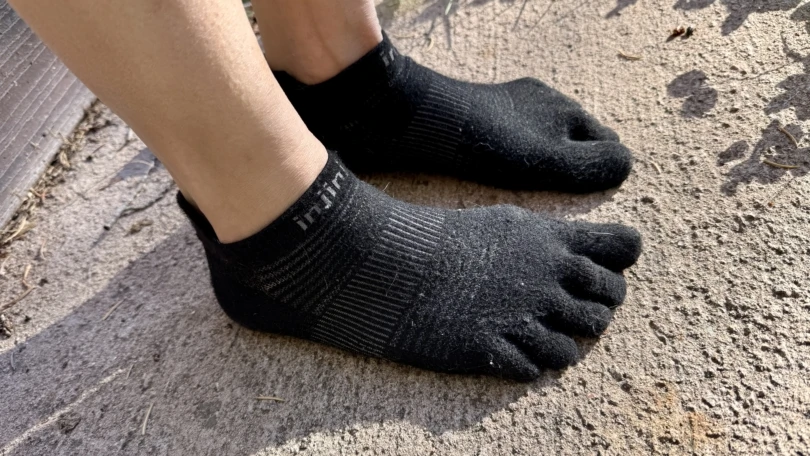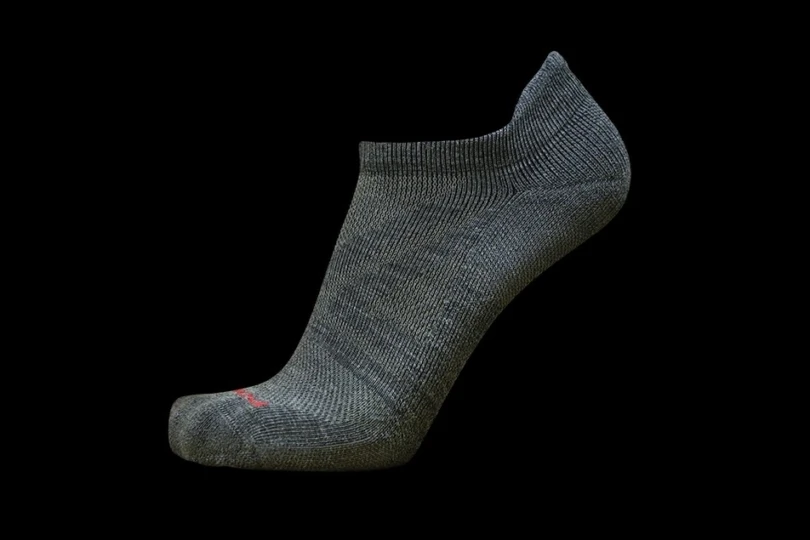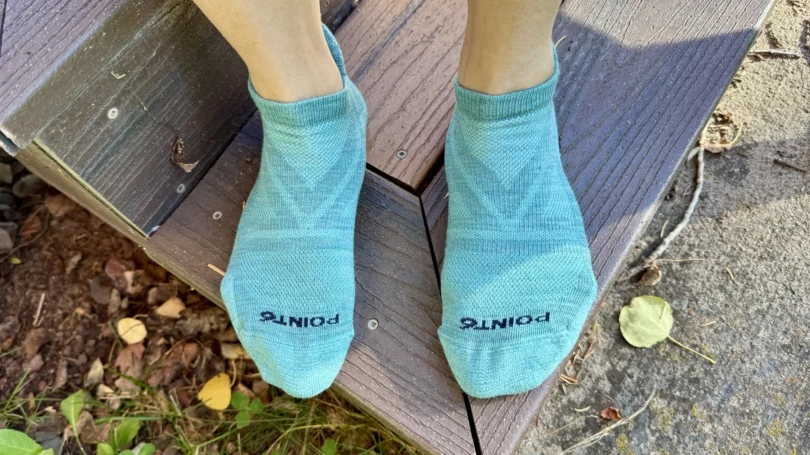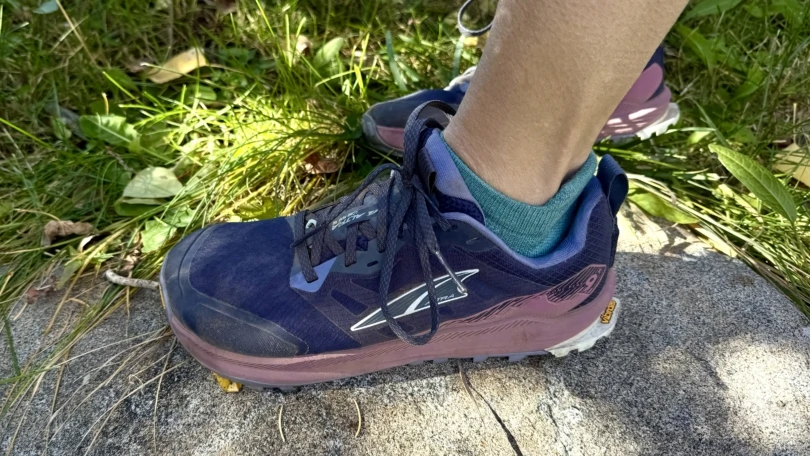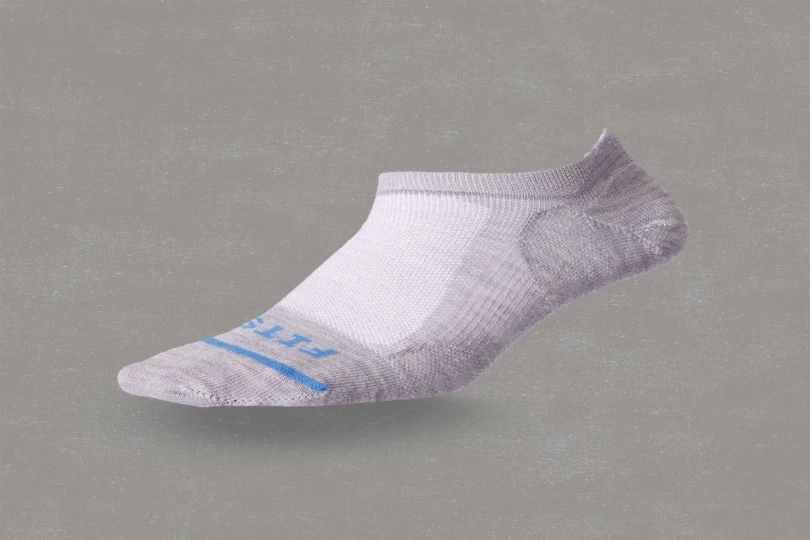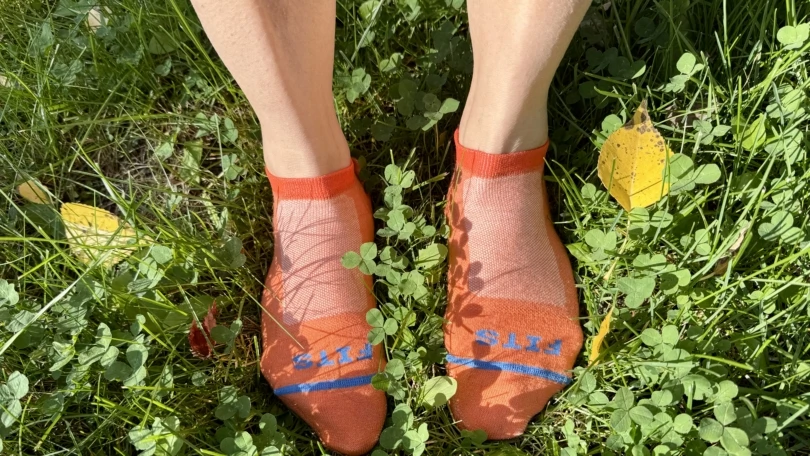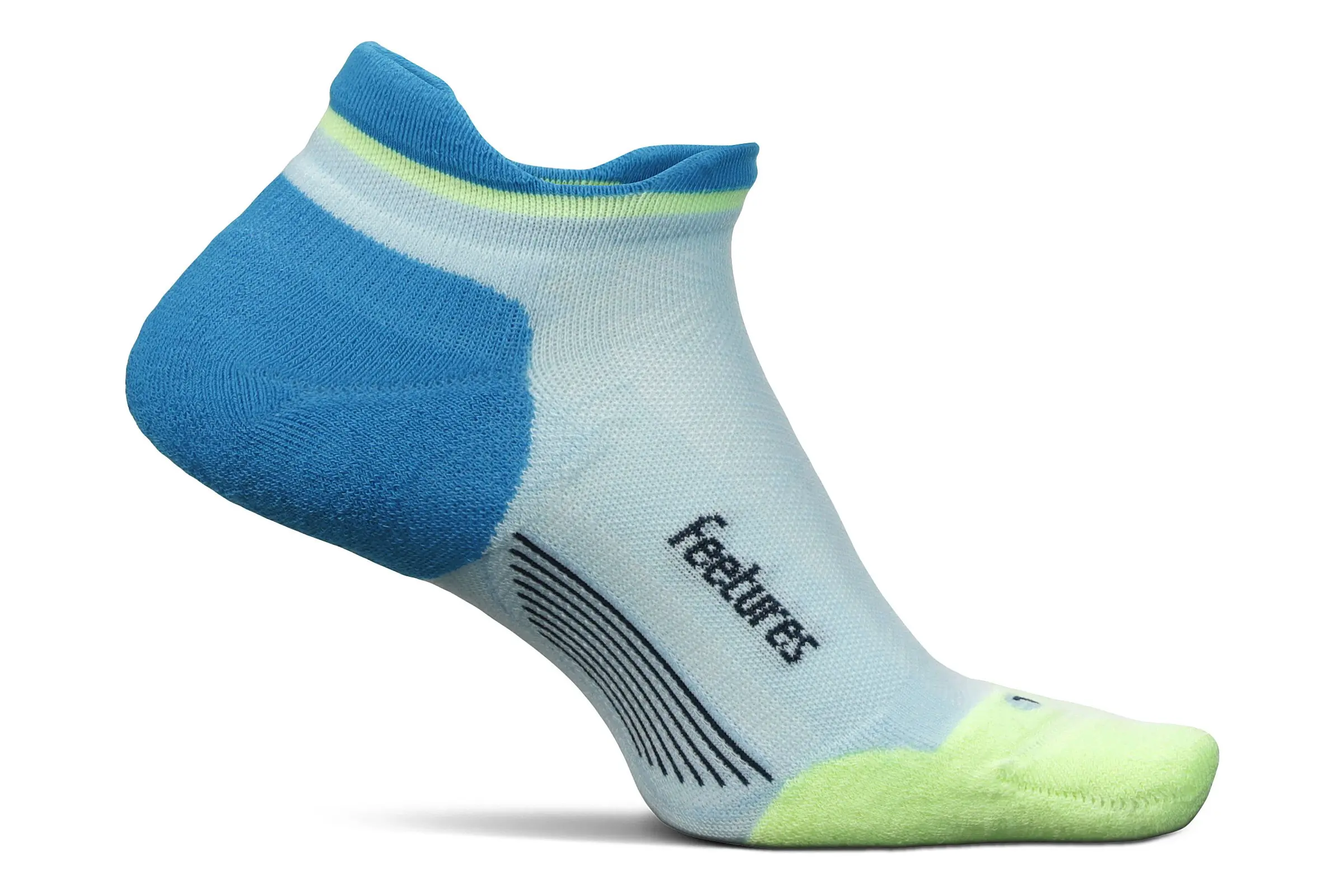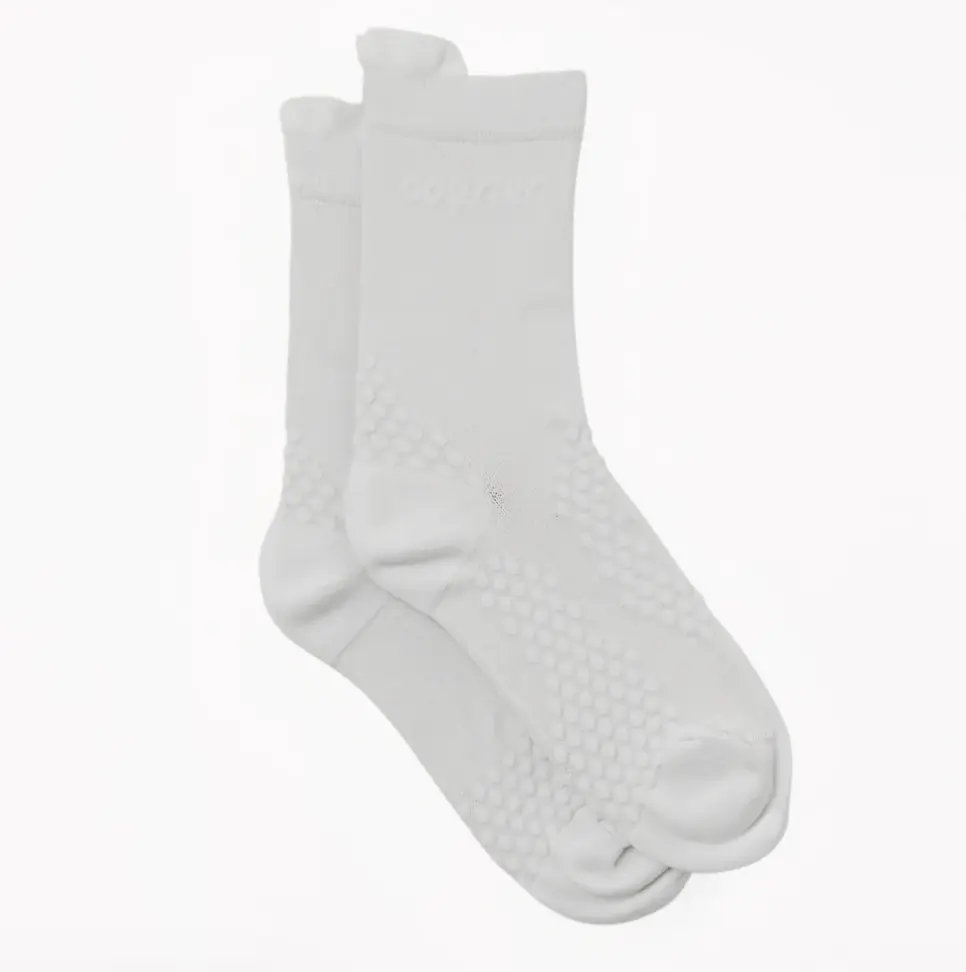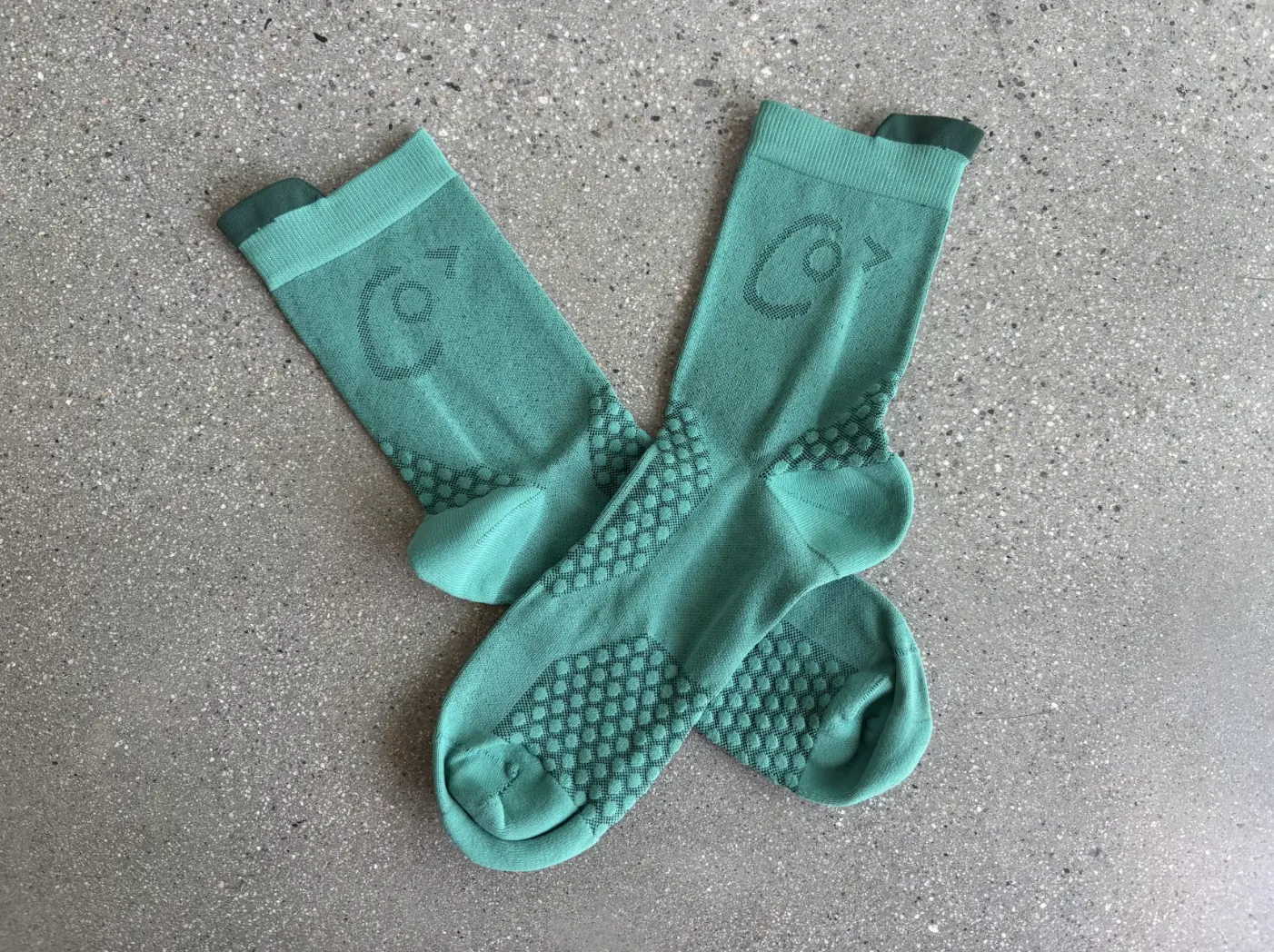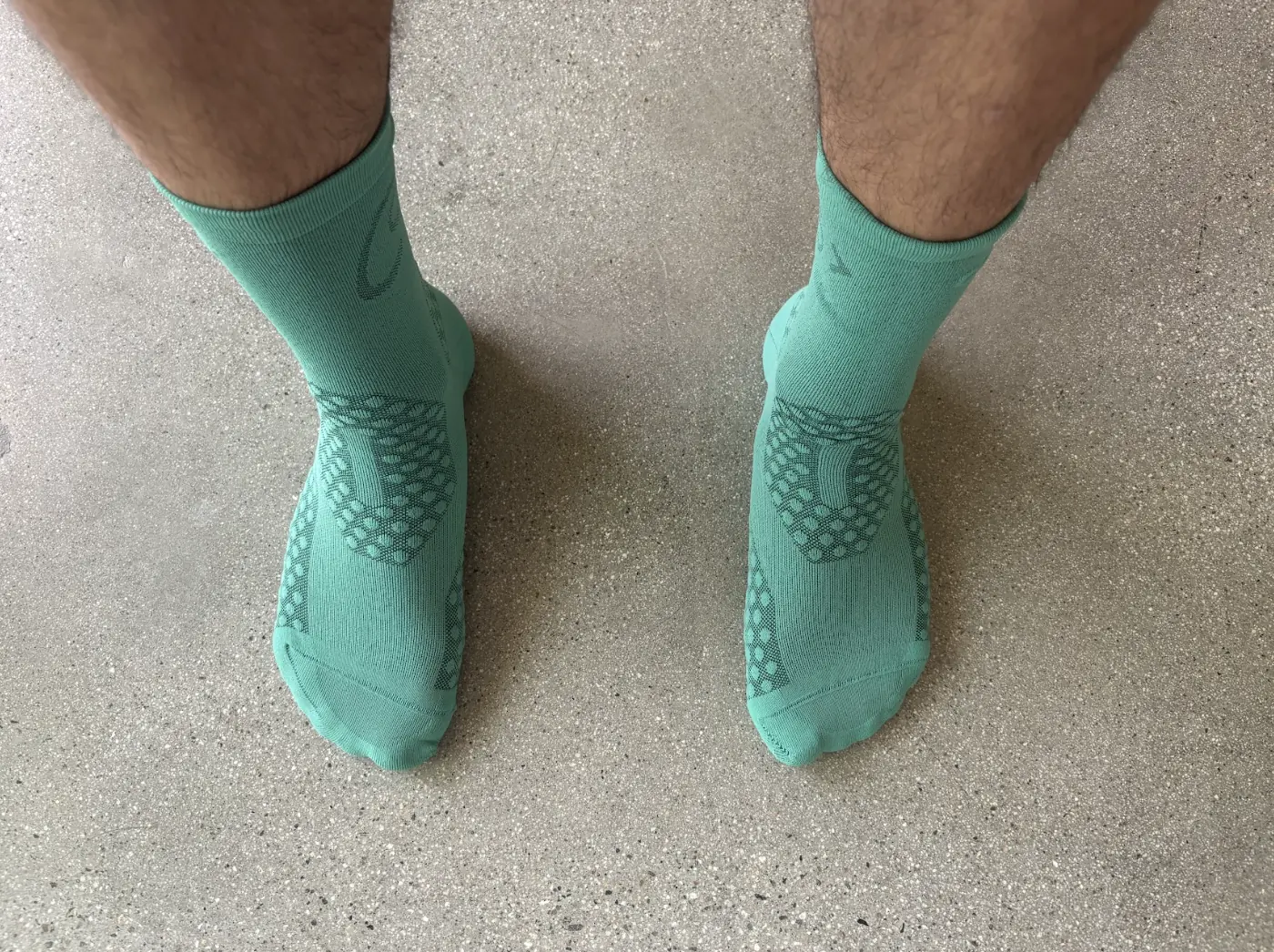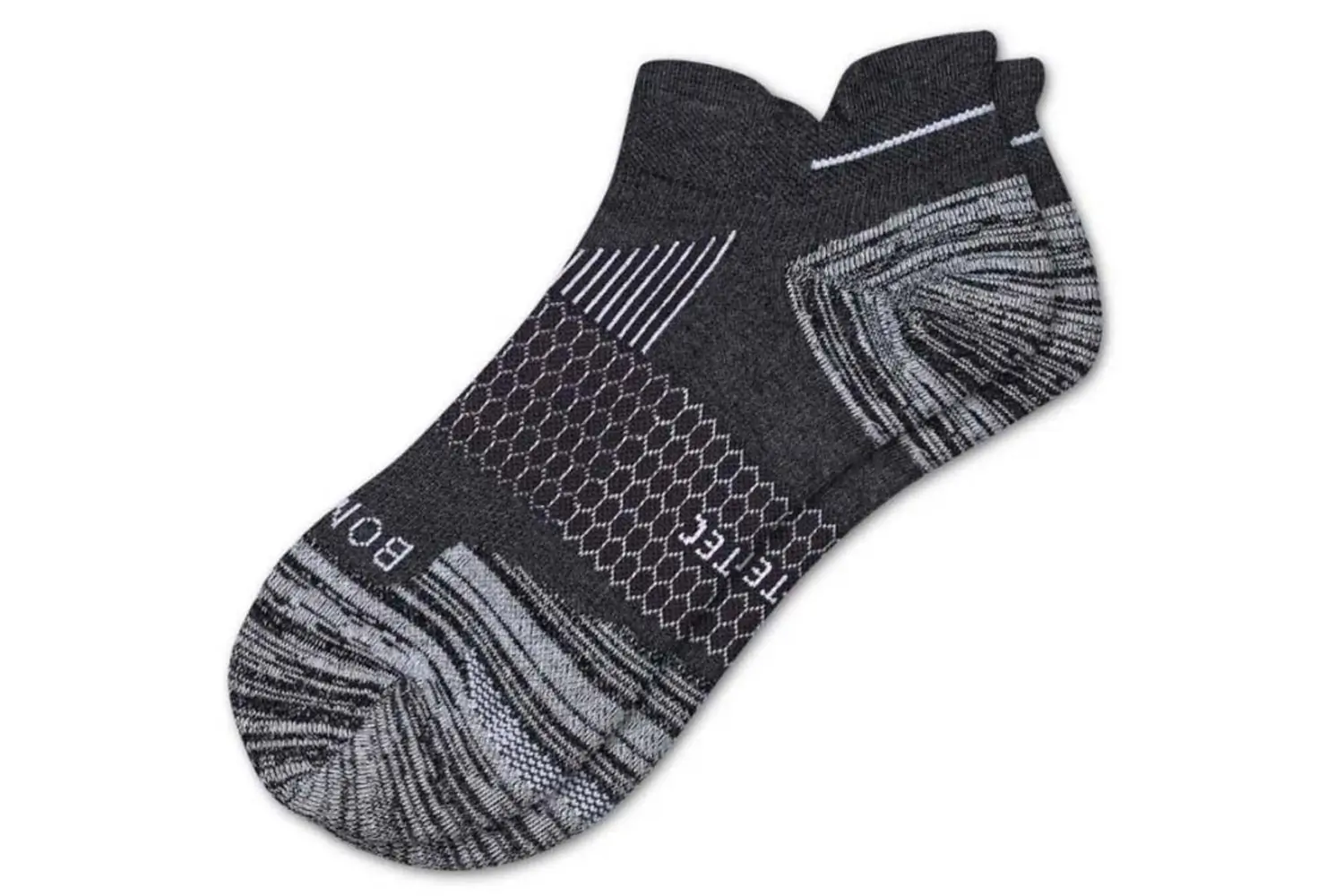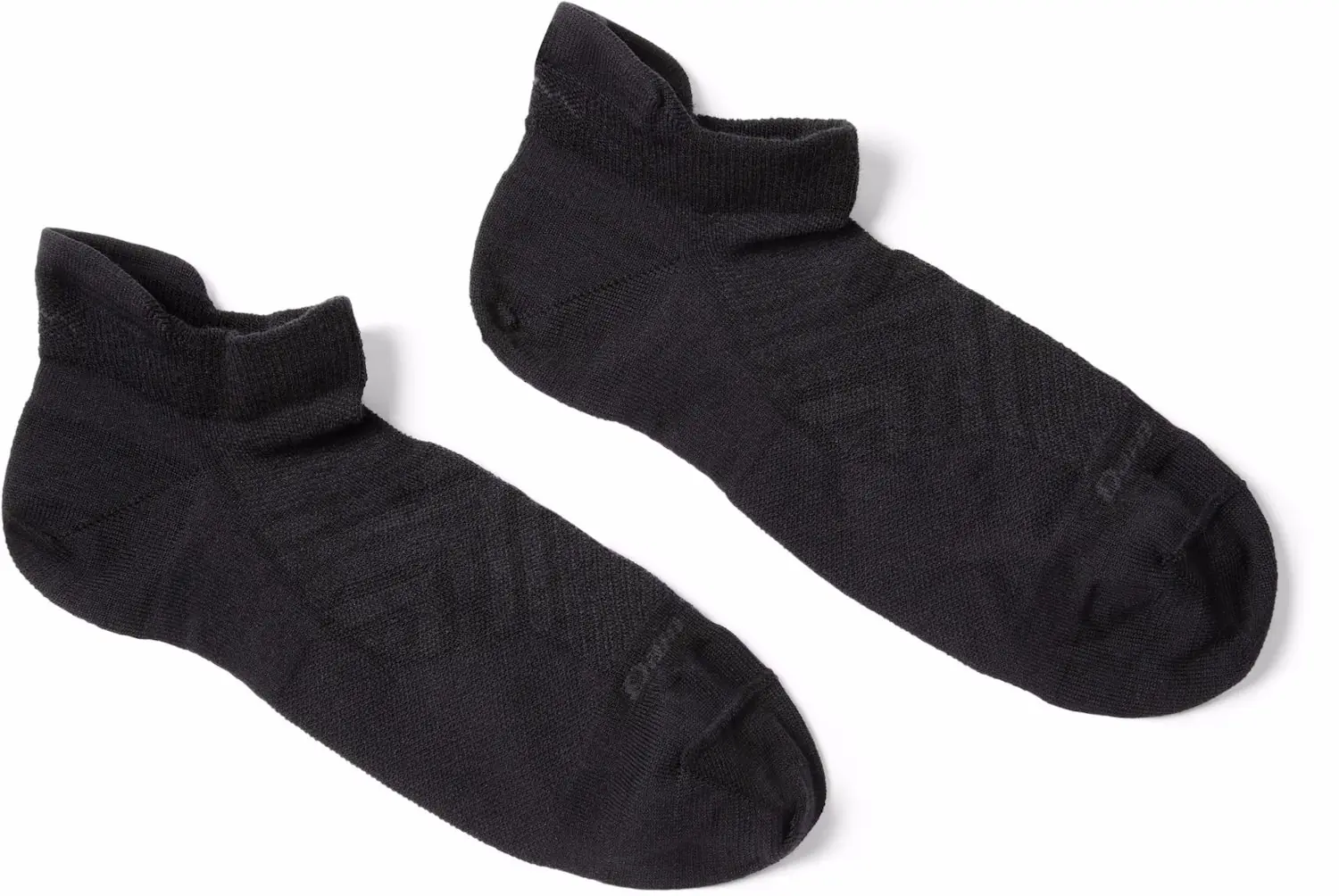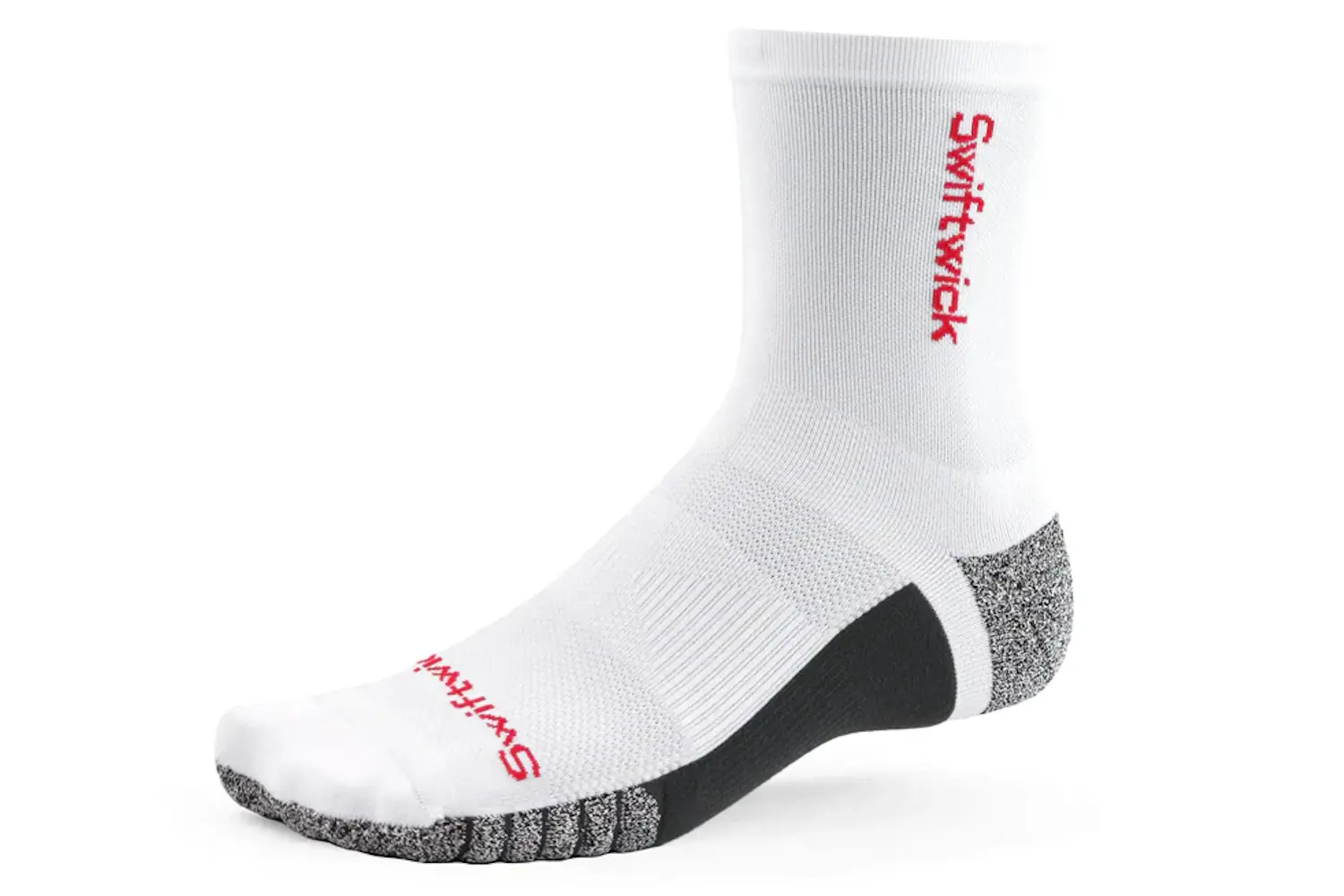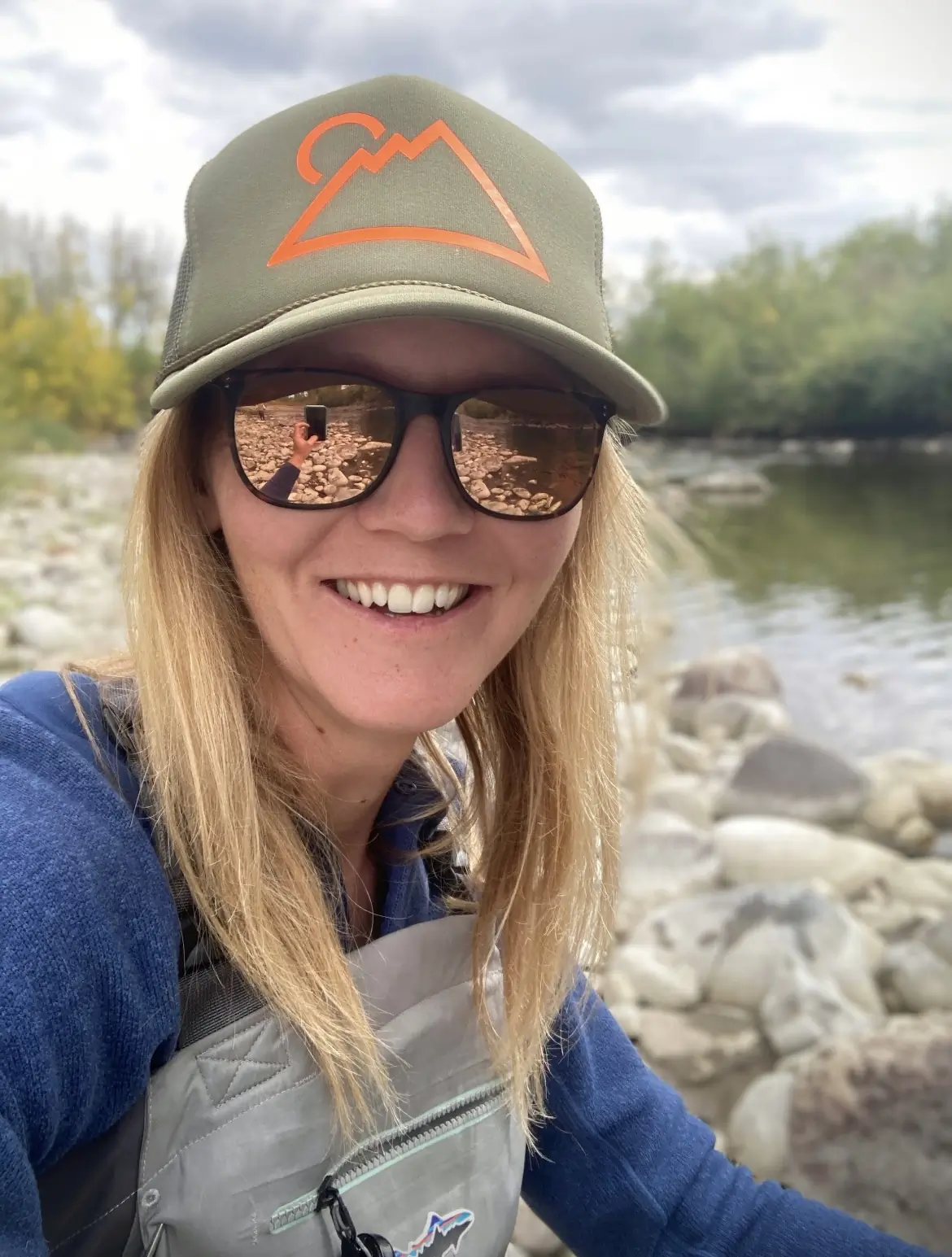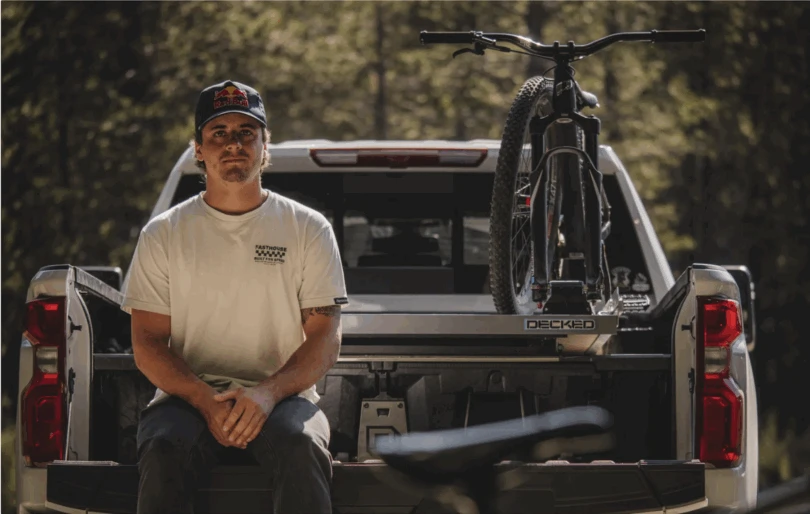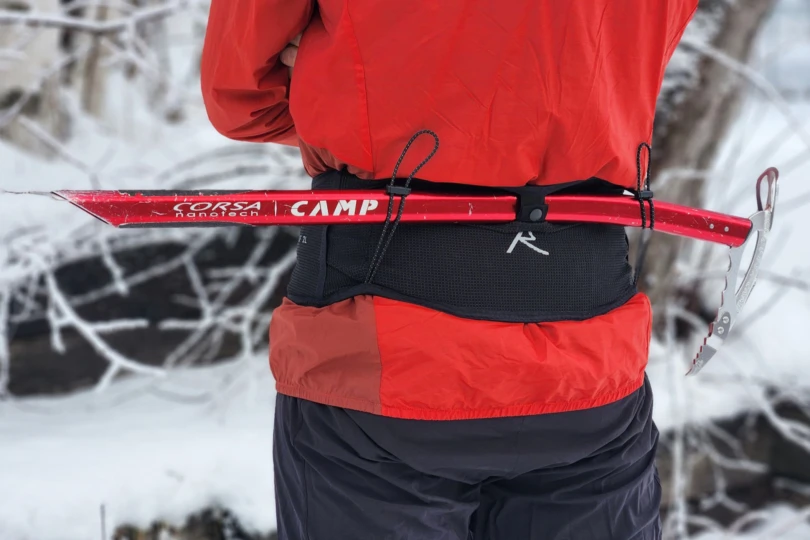Socks are easy to take for granted — unless you regularly pound the pavement or trot on the trail. Runners’ feet put in dozens, maybe hundreds, of miles every month, so it pays to take care of them with the best running socks available.
Socks have evolved from plain cotton sweat-soppers to highly technical, sport-specific pieces of gear designed by and for runners. We looked around and put in hundreds of miles on pavement and trails to find you the best running socks in the game. We found excellent running socks for warm weather, long-distance runs, compression, and more.
Right out the gate, the Balega Hidden Comfort Socks are our favorite performance socks, and the Saucony Performance Heel Tab Athletic Socks are our top choice if you’re looking to reinvigorate your sock drawer on the cheap. We also love the Injinji Run Lightweight No-Show Sock if you’ve got a hankering for toe coverage. There’s no one great sock for everybody, but we’ve learned that there are great socks for all kinds of runners. And we’ve got a solid selection of the best right here.
Editor’s Note: Heading into fall, we updated this guide on October 6, 2025 with the addition of the Injinji Run Lightweight No-Show Socks, Point6 Dash Extra Light Sock, and the FITS Original Ultra Light Cushion No Show Sock.
The Best Running Socks of 2025
Saucony Performance Heel Tab Athletic Sock
- Material: Polyester, spandex
Pros
- Unbeatable price for the quality of the sock
Cons
- They run long, so they can feel too big on longer feet
Swiftwick Vision Six Impression
- Material: Nylon, polyester, spandex
Pros
- Great design
- Solid cushioning
- Moderate compression
Cons
- Pricey
- Compression may feel tight on wider feet, so size up
Injinji Run Lightweight No-Show Socks
- Material: CoolMax EcoMade, nylon, lycra
Pros
- Great blister protection in a hard-to-reach spot
- Less sweat with fabric between your toes
- Toes flex more naturally with individual compartments
Cons
- Light on the cushion
- Can be finicky to pull on
Point6 Dash Extra Light No Show Sock
- Material: Wool, nylon, elastic
Pros
- Comfortable fit with plenty of room in the toe box
- Highly breathable; they feel great in warm, sweaty weather
- Just enough cushioning without too much bulk
Cons
- The hand of the fabric initially feels rough
Fits Original Ultra Light Cushion No Show Sock
- Material: Merino wool, nylon, polyester, and lycra
Pros
- Deep heel pocket prevents slipping, even on long runs
- Minimal cushioning keeps bunching away
- Quite breathable in warm weather
Cons
- Horizontal seam across the toes feels awkward at first
More Great Socks, Field Tested
Though the socks below didn’t make the top of our list, they’re still great running socks and worthy of your feet, especially when they go on sale.
- Material: Polyester, nylon, elastane
Pros
- Highly breathable
- Great fit
Cons
- All the mesh feels great in warm weather but feels too cold during runs in cold weather
- Material: Nylon, polyester, spandex
Pros
- Provides support during running
- Encourages blood flow under arch
Cons
- Not the most durable socks out there
- Material: Polyamide, spandex
Pros
- Provides support during running, helps aid recovery after
Cons
- Pricey
- Material: 54% Recycled Nylon, 41% Nylon, 5% Elastane
Pros
- Graduated compression keeps blood flow at a maximum
- Proprietary zonal cushioning looks cool and works wonders
- Lightweight fabric around the toes allows for splay that most compression socks don’t
Cons
- $30 is pretty expensive for a pair of socks
- Material: Polyester, nylon, LYCRA
Pros
- Dual-layer design absorbs the friction that causes blisters
Cons
- Inner layer can bunch up and make it difficult to put the sock on
- Material: Polyester, nylon, cotton, spandex
Pros
- Extremely soft
- Great fit
Cons
- On the pricey side
- Material: Polyester, spandex
Pros
- Great price for compression socks
Cons
- Thin material sacrifices durability
- Material: Polyester, spandex, nylon
Pros
- Affordable
Cons
- Could use more padding on forefoot
- Material: Polyester, nylon, spandex
Pros
- The toughest socks we’ve ever used
- Plenty of venting on hot runs, but warm on cold runs
Cons
- A bit on the thick side
- Holds more moisture than a thinner sock
- Materials: 68% Nylon, 19% Olefin, 9% Polyester, 4% Spandex
Pros
- Ideal blend of comfort and compression
- Extremely durable
- Stay in place throughout the run
- Breathable in all conditions
Cons
- Not left- and right-foot specific
Running Socks Comparison Chart

How We Tested Running Socks
The GearJunkie crew is made up of a bunch of runners. From casual weekend warriors to serious running addicts, we have them all. Naturally, running socks fit right into our expertise. Our team sifted through hundreds of brands and sock variations. Our goal was to find the best of the best running socks, budget-friendly pairs, and everything in between.
Our Expert Testers
Heather Balogh Rochfort is a former ultrarunner who still consistently runs 3-4 times per week. In particular, she enjoys trail running on obscure singletrack near her home outside of Aspen, Colorado. Raised as a competitive dancer and ballerina, Balogh Rochfort has always struggled with her feet, so running socks have long been a paint point (until she found her Injinjis, that is).
Constance Mahoney is an experienced runner who has completed races from local 5Ks to trail ultramarathons. In 2021, she founded and continues to lead the Trail Sisters Crested Butte, Colo. chapter. Constance has been a GearJunkie contributor since 2019, after she reviewed outdoor gear for FitnessTravelGear.com for two years.
Will Porter is a writer and gear tester who has been running competitively for 20 years, from junior high cross country to his first ultramarathon in 2024. He’s tested gear on the streets of New York City, the foothills of Boise, Idaho, and the coastal mountains in Marin County.
He has been writing and reviewing gear since 2019. Socks have always been one of his biggest running headaches, so it’s safe to say he’s a well-versed expert in the subject.
Our Testing Process
We tested running socks the only way we knew how: running many miles in all different conditions. We wanted to know how fast each sock dried from creek crossings, sweaty track sessions, and humidity. We paid attention to seam placement and if the sock slid at all.
We considered how compression and cushioning placement helped (or didn’t) over long runs. We carefully inspected each pair after each run and washing to see if any deterioration or pilling occurred.
Socks are your first defense against blisters and fatigue, but we all know shoes are way more exciting! Check out GearJunkie’s guides to the best trail running shoes for men, the best road running shoes, and the best trail running shoes for women.




Buyers Guide: How to Choose the Best Running Socks
Wicking & Breathability
One of the most important aspects of running socks is how well they regulate moisture. Moisture leads to friction, and friction is what causes the majority of blisters.
One way that socks eliminate moisture is by allowing excess heat to exit the sock (breathability), which helps prevent sweating in the first place. The other is by pulling (or wicking) the sweat off of the foot and moving it to the outside of the sock, where it can evaporate. Both of these features are essential when choosing a pair of running socks.
Because of its toe sock design, the Injinji Run Lightweight No-Show Sock can wick moisture away from in-between the toes, a common place for blisters to pop up. Keeping your feet cool is not only a way to minimize sweat, but it also keeps your feet comfortable and helps prevent swelling.
At best, swelling is uncomfortable. At worst, it will cause your foot to press up against the sidewalls of your shoe, which is painful and adds friction points where blisters can appear.
Venting is easy to spot in running socks. Look for slits, waffled or checkered patterns on the top of the foot or around the midsole. Most socks will put breathable material in this area because the laces are a more open part of the shoe and let the heat escape more efficiently.
As far as moisture-wicking goes, look for synthetic materials, which, unlike cotton, repel moisture rather than retain it. Materials like polyester are effective at pulling moisture off and evaporating it quickly. Likewise, wool socks like the Point6 Dash Extra Light No Show Socks or the FITS Original Ultra Light Cushion No Show sock do a fantastic job of moving moisture away from the skin thanks to wool’s natural sweat-wicking properties.
Avoid cotton socks at all costs. Unless it’s bolstered by synthetic material, cotton will soak up water and retain it, leaving your feet vulnerable to blisters.
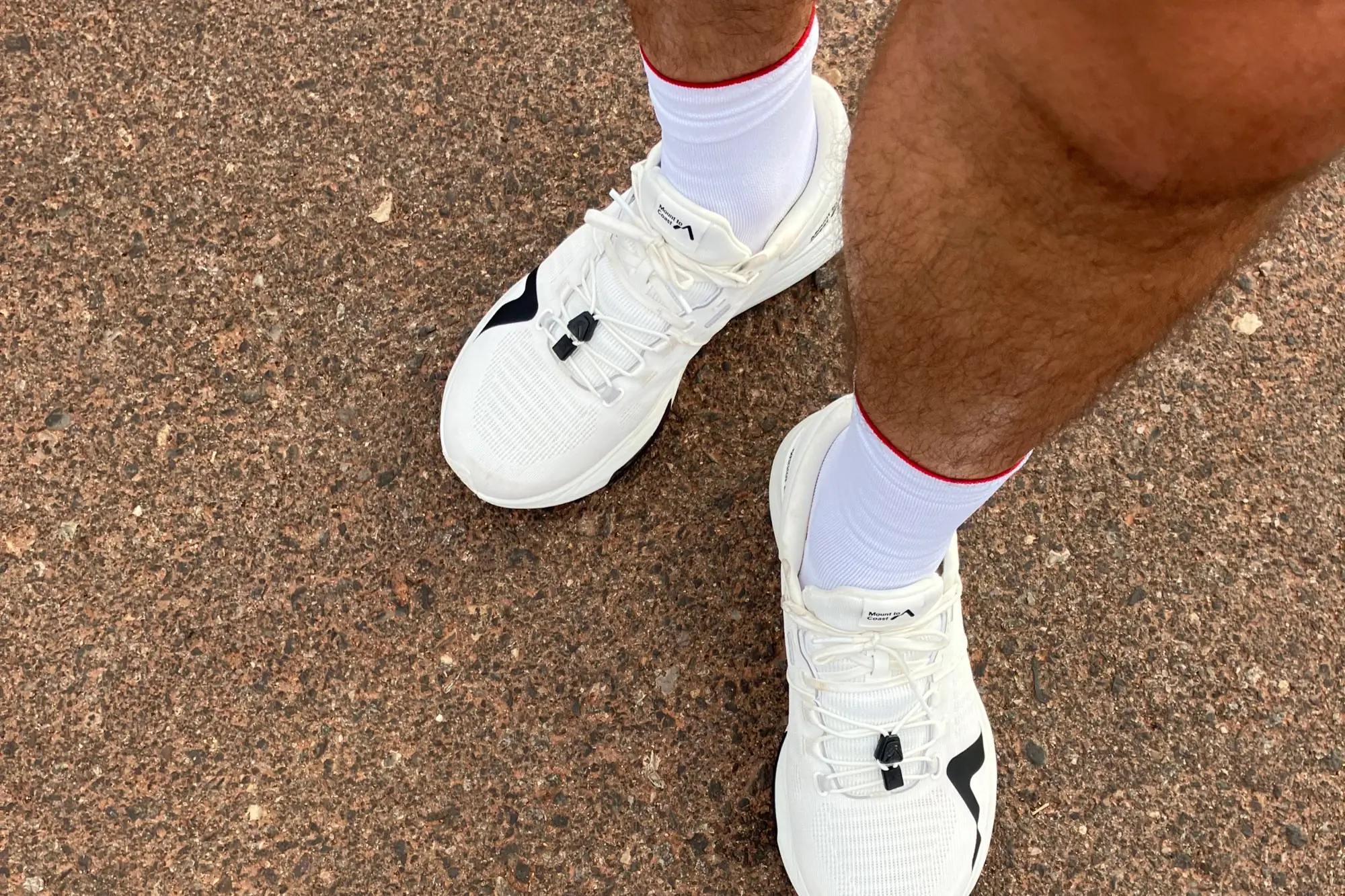



Fit
Socks that fit poorly are terrible for runners. Socks that are too tight not only cause discomfort but also press the toes together, which greatly increases the risk of blisters between the toes.
Socks that are too big will bunch or wrinkle in the shoe, which creates friction points where blisters can form. One tester wore socks that stretched out on a hike and bunched up underfoot, causing a 3-inch blister to form on his sole. You’re going to want to avoid that at all costs.
Most running socks are unisex, like Balega’s Silver No-Show running socks. The best running socks for men and the best running socks for women are the same, depending on how you plan on using them. Look on the packaging or online for size scales for both men and women.
Socks rarely come in specific sizes, so your options are going to range from XS to XL and above. Most socks stretch to accommodate different sizes, thanks to some percentage of stretchy fibers like elastane embedded in the material.
Any given sock will work for a range of sizes. For example, a size large may be for feet sized 10 to 12. Sock packaging and websites will list a scale to help buyers choose the right size.
Compression socks are a bit different since the socks are built to provide a tighter fit, depending on the compression grade. You’ll still have a similar sizing scale, but many brands suggest buying a smaller sock if you want additional compression or a larger sock if you want lighter compression.


Comfort
You’ll be spending a lot of time in your running socks, so you’re going to want comfortable ones. The Bombas Performance Ankle Sock and the Balega’s Hidden Comfort socks are about as comfortable as it gets. Besides finding the right fit, you’re going to want a sock that regulates heat and moisture well. Also, look for socks that will provide adequate padding for the pounding that your feet face during a run.
Most running socks are made with a synthetic material like polyester. These are effective at wicking away sweat but aren’t known for their softness. Higher on the comfort scale is a wool/synthetic blend. The natural fiber is softer, while still retaining the ability to breathe well and pull sweat from the skin.
Cotton is the softest material and feels great on the skin. However, it tends to lose its shape (which can lead to bunching), and it holds on to moisture. A few brands have managed to find the right balance between cotton and synthetic materials. The result is a comfortable sock that also wicks away moisture.
Overheating and sweat accumulation can cause discomfort and create blisters. Make sure that your socks are made of breathable material with breathable mesh panels. These are easy to spot. Look for a different pattern on the top of the foot. This indicates a more open weave than the rest of the sock.
Padding is key as well. Find a sock with padding running along the sole of the foot, which will absorb foot strike impact. This also serves to lengthen the sock’s lifetime, as that’s the most high-impact area of the foot. If you want the lightest sock possible, choose a sock that only has padding on the heel and forefoot.




Height
Running socks come in a few general sizes. There’s the no-show sock, which sits below the ankle; the three-quarter-length sock, which sits above the ankle; the crew, which falls just under the calf; and the knee-high, which sits right at the knee.
No-show socks are ideal for running in hot or moderate weather. They’re lighter and have less material. This means you can stash a spare in your running pack if you run through a creek. This also comes in handy when nature calls on the trail and you need to improvise some toilet paper.
When shopping for a no-show sock, make sure that it has padding on the back of the cuff, like the Feetures Elite Max Cushion No-Show Tab Sock. This added material helps prevent shoe rub on the back of your ankle, which can cause blisters.
Three-quarter-length socks are favored by trail runners. WRIGHTSOCK’s CoolMesh II has a higher cuff and is better at preventing trail debris, such as dirt or twigs, from getting inside the sock. Debris in your socks can force you to stop your run and get it out before it causes a blister.
Crew socks serve a similar function, adding protection for off-trail runs. The Vision Six Impression socks wick away sweat and moisture before it drips down into your shoe. The added height also helps protect ankles from ankle-biting bushes along the trail.
Knee-high socks take crew socks to the extreme. Knee-high styles are common in compression socks. Thirty48 Elite Compression Socks go up around the calf and feature a graded compressive material that helps improve blood flow and minimize swelling of the calves and ankles.
Durability




Running socks put in lots of miles on varied terrain, making them susceptible to more wear than other socks. Many companies use higher needle counts to create a thicker material or blend durable fibers to combat this.
Having a running sock fall apart can feel like a small disaster. Any hole puts your foot in contact with your shoe, creating a hotspot that can cause blisters. With many running socks sitting around $15, repeatedly replacing running socks can take a bite out of your wallet.
You can avoid this by reading reviews or by going with brands that are known for their durable socks. Darn Tough is our pick for the toughest sock on the market. It also offers a lifetime guarantee: If you ever wear a hole in one of its socks, the company will send you a new one.
That means you’ll never have to buy that sock again unless you want multiple pairs. For the record, we’ve never worn a hole in one.




Another option is to buy socks in multipacks. Many companies like Saucony Performance Heel Tab Athletic Sock sell socks in eight- and 16-packs at a discounted price. The trade-off here is that the socks are often lower quality than the top-tier ones.
If you’re new to running, consider buying one higher-end pair of socks and a small multipack. This way, you’ll have running socks for the week, and you can accumulate more high-end socks over time. Also, to help your socks last longer, make sure you wash them according to the product’s specifications. Dryers are often a good way to ruin high-quality socks. Here is a helpful article on how to wash activewear.
Price & Value
While the actual price range for running socks isn’t that wide, the differences between cheap and expensive socks are extensive. There’s nothing worse than getting to the last few miles of a race and succumbing to blisters or waterlogged feet. Here are the differences in what you get based on what you’re willing to spend.
Bargain
Socks that cost less than $10/pair are what we’d consider bargain prices. Don’t get us wrong, bargain socks are not a bad thing. In fact, one of our testers still likes to run in a standard pair of Hanes crew socks. However, when you spend less, you’re going to get less.
Cheaper socks are generally made out of cotton, which doesn’t dry very quickly and can get scrunched up easily. They don’t hold up to frequent washing, and, in general, the construction of a sub-$10 sock isn’t going to be up to par with the big boys.
Mid-Tier
We’ll call the mid-tier anything that runs you between $10 and $20. There are some absolutely outstanding socks in this category (which you’ll be well-acquainted with if you read the whole guide). This is where you start to get some premium materials, better moisture-wicking properties, and run-specific features like targeted compression and cushioning. Mid-tier socks will last longer than budget socks and, in many cases, last longer than premium socks that are geared more toward performance than longevity.
Premium
Premium running socks are the ones that set you back more than $20/pair. This is a growing category, and while you may not initially feel good about dropping a 20-spot (or more) on one pair of socks, you’ll immediately be able to feel the difference.
The Swiftwick Flite XT are $24, and after testing, we can confidently say they’re worth it. They’re made to last and provide the best features of all the socks we’ve tested.
Similar to the best running shoes, some expensive socks are designed for race day and won’t last as long as some cheaper options, but they won’t be lacking in performance. Consider this when you start looking at options tailored for racing.
If you’re new to running, consider buying one higher-end pair of socks and a small multipack. This way, you’ll have running socks for the week, and you can accumulate more high-end socks over time. Also, to help your socks last longer, make sure you wash them according to the product’s specifications. Dryers are often a good way to ruin high-quality socks. Here is a helpful article on how to wash activewear.


Frequently Asked Questions
It depends on your running style and conditions. Thin running socks are lightweight, breathable, and great for hot weather or snug-fitting shoes. Thicker socks add cushioning and warmth, which can help on long runs or during colder months. Many runners keep both options in rotation depending on the season.
The lifespan of running socks depends on mileage, materials, and how well you care for them. High-quality pairs can last several hundred miles, but thinner socks may wear faster in high-friction areas like the toes and heels. When you start to notice thinning fabric, stretched-out compression, or new blisters, it’s time to replace them.
Yes — almost all elite and professional runners wear performance socks. Technical socks help reduce blisters, wick sweat, and provide targeted support that cotton socks can’t. For long-distance and marathon runners, socks are just as essential as shoes.
To keep running socks performing at their best, wash them inside out in cold water with a gentle detergent. Skip fabric softeners and bleach, which can break down technical fibers and reduce breathability. Air-drying is ideal, but if you use a dryer, stick to the lowest heat setting so you don’t torch the materials. Proper care helps preserve elasticity, prevents shrinkage, and extends the lifespan of your socks, especially for premium merino or compression models.
For most runners, a rotation of 4–6 pairs is the sweet spot. Having multiple pairs lets each sock fully dry between runs, which helps prevent stench buildup and premature wear. Rotating socks also spreads out the mileage, so even lightweight or cushioned models last longer (which is also helpful to save money over the long term).
If you’re training daily or logging high mileage, consider bumping that number up to 7–10 pairs to always have a fresh option on hand.
Compression socks use graded compression on targeted parts of the foot and calf. This compression facilitates blood flow and helps minimize swelling. They can also reduce swelling and provide support for your calf and arch.
Runners use these as a way to help the circulatory system provide the muscles with oxygen and flush out lactic acid during runs. Compression also minimizes the repeated vibration that comes with running, which causes microabrasions in the muscle that can lead to fatigue.
Runners also use them for post-run recovery. Many runners will wear compression socks or use inflatable compression garments after runs to speed up post-run recovery and reduce soreness, as the increased blood flow helps carry nutrients to the muscles. This reduces soreness and lessens recovery time, especially after high-intensity workouts.
Absolutely. Running socks go a long way in increasing the enjoyment and effectiveness of run training. First and foremost, they keep your feet cool and dry, removing the moisture that can add friction and cause blisters. They also act as an essential barrier between the foot and the shoe, eliminating friction and hot spots.
They are undoubtedly more expensive than regular socks, but can make the difference between a fun day on the trail, and painful blisters — or worse.
Additional padding on the soles of running socks provides essential cushioning that reduces foot strike impact as well. Compression socks help you run longer and recover faster. After your running shoes, a good pair of running socks is a runner’s most important piece of running gear.

